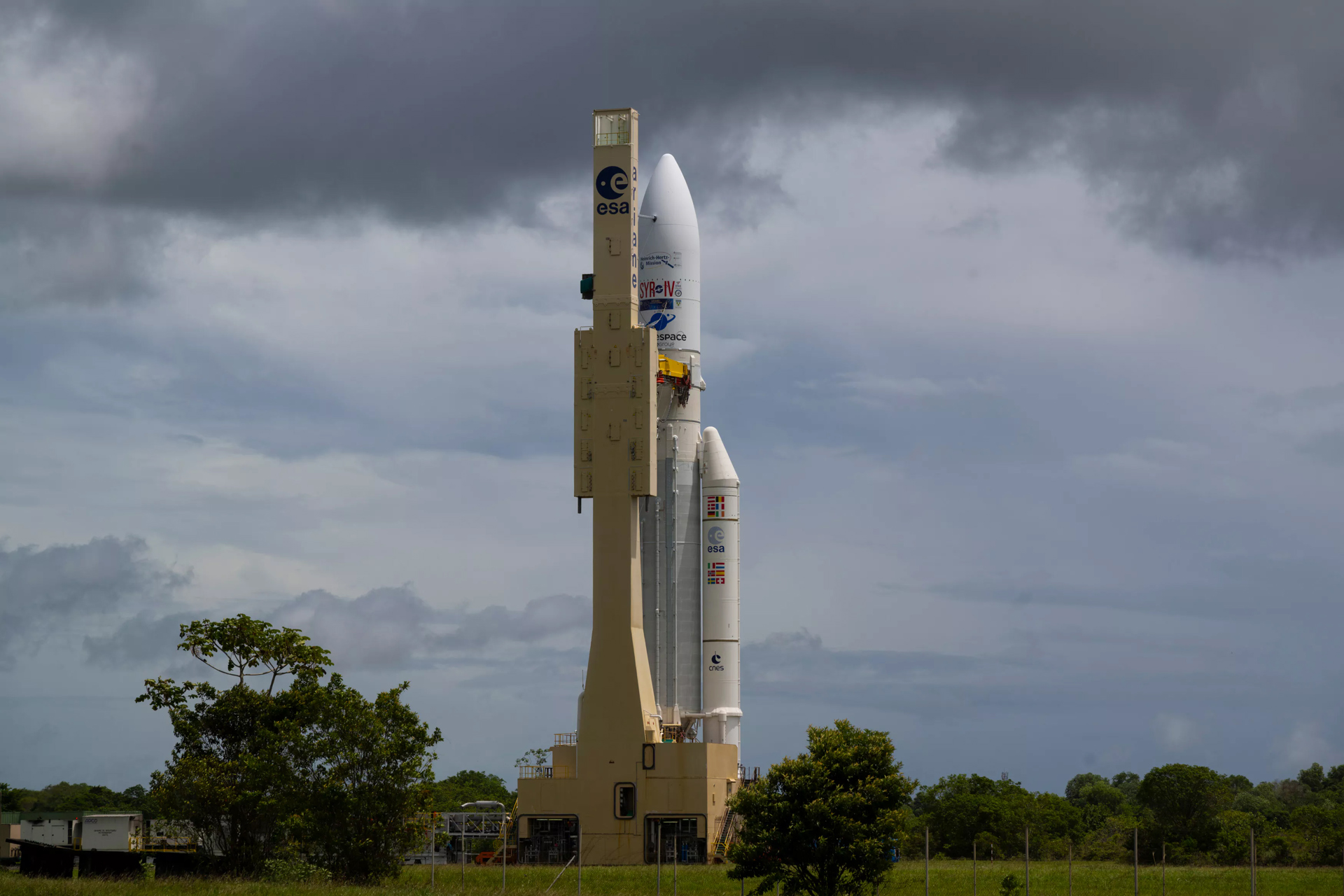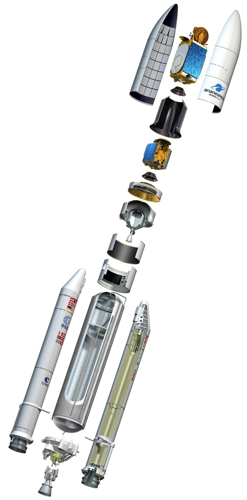
The last flight of Europe’s most powerful workhorse
Last ever launch of Europe's powerful Ariane 5 heavy-lift space launch vehicle on July 5 after delays. The rocket is the reliant, available and affordable workhorse of Europe’s independent access to space. Kongsberg Defence & Aerospace (KONGSBERG) has proudly worked with Ariane 5 for 33 years.
-
Text:Njål Frilseth / KONGSBERG
Photo:ESA
Ariane 5, developed and operated by Arianespace for the European Space Agency (ESA), is the world reference for heavy-lift launchers, capable of carrying payloads weighing more than 10 metric tons to geostationary transfer orbit and over 20 metric tons into low-Earth orbit – with a high degree of accuracy mission after mission.
Developed under management of the European Space Agency (ESA), Ariane 5 is able to lift the heaviest spacecraft either in production or on the drawing boards, and enables Arianespace to match up most telecommunications satellites for highly efficient dual launches.

Photo: An international team of scientists have used data collected by the NASA/ESA/CSA James Webb Space Telescope to detect a molecule known as the methyl cation (CH3+) for the first time, located in the protoplanetary disc surrounding a young star.
Credit: ESA/Webb, NASA, CSA, M. Zamani (ESA/Webb), the PDRs4All ERS Team
Norwegian contributions
During the Ariane 5-lifespan, Kongsberg Defence & Aerospace has contributed with its Level Conditioner and Booster Mechanisms. The Level Conditioner is a component part of the fuel level measurement system for launchers using liquid propellants, LOX, LH2 or others. A whopping 2425 Level Conditioners has been on a total of 117 Ariane 5 launches.
The Ariane 5 boosters (engines) are more than 30 m high with 237,8 metric tons of propellant, delivering more than 90 % of the total thrust and burn for 130 seconds. They are attached to the main stage by KONGSBERG Booster Attachment and Release Mechanisms. The Booster Attachment and Release Mechanisms keeps the boosters safely attached to the main stage during the powerful launch of the rocket. With extreme precision, the boosters are released from the main stage.
Ariane 5 has launched six to seven times a year, out of which one or two are launches for institutional customers. The successive versions of the first generation of rockets, Ariane 1, 2, 3 and Ariane 4 series, launched half of all the world’s commercial satellites at the time. Ariane 5 maintains this impressive record, making it one of the most reliable launchers in the world.
5’s last launch
Not only has KONGSBERG delivered components to Ariane 5’s last mission, but KONGSBERG’s Space & Surveillance division has also delivered components to one of its payloads – the Heinrich-Hertz-Satellite named after the German physicist Heinrich Hertz who discovered radio waves.
The Heinrich Hertz mission, managed by the German Space Agency at German Aerospace Center (DLR), aims to explore and test new communications technologies in space at a technical and scientific level in order to determine how broadband communications, for example, can result in high data rates for mobile final users. KONGSBERG has delivered its Command Receivers and Telemetry Transmitters with inbuilt frequency flexibility, allowing in-orbit broad banded selection of receive and transmit frequencies. In other words, it provides a connection between the satellite itself and the stations on the ground - key component for operating a satellite.
The Ariane 5 will also deliver the French military satellite Syracuse 4B to geostationary transfer orbit. The Syracuse 4B, part of a French military satellite communications (milsatcom) program, is built for the French defence procurement agency DGA. The satellite will handle long-range and secure defence telecommunications between headquarters in France and units deployed in different theatre’s of operation.
After deployment, Heinrich-Hertz-Satellit and Syracuse 4B will make their own way to geostationary orbit, a circular path that lies about 35,700 kilometres above Earth.

Historic payloads and the future
Ariane 5 mainly delivers communications satellites to Geostationary Transfer Orbit but has also proved itself on non-geostationary transfer orbit missions for institutional customers.
Among the many spacecraft the Ariane 5 has carried off Earth are ESA's Rosetta probe, the first spacecraft ever to orbit a comet, which launched in March 2004. In one of the most iconic space exploration launches ever performed by Ariane 5, the launcher successfully lifts NASA’s Webb Space Telescope – sending the most powerful space observatory ever built on its way to study origins of the Universe.

Ariane 6 will provide Arianespace with new levels of efficiency and flexibility to meet customers’ launch services needs across a full range of commercial and institutional missions, with first flight planned in 2023. Europe’s new launch vehicle will be capable of a wide range of missions - available in two versions depending on the required performance.
KONGSBERG has delivered a total of 135 000 kg of Booster Attachment and Release Mechanisms components to more than 100 successful Ariane 5-launches during its lifespan and KONGSBERG will continue to deliver both Level Conditioners and the forward Booster Attach and Release Mechanism for the Ariane 6.


Photo: Elements of Ariane 5
Credit: Arianespace - ESA